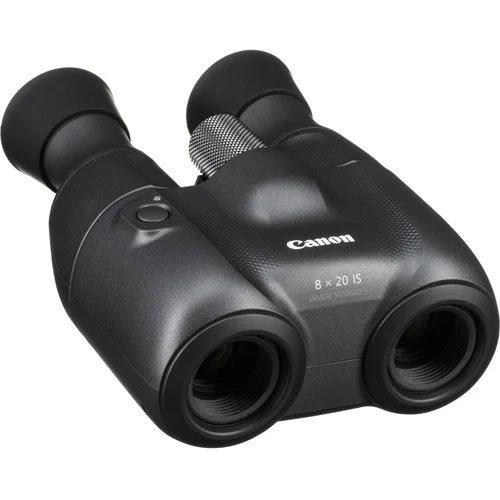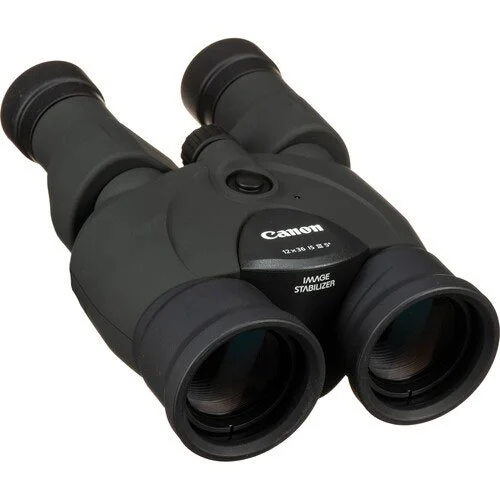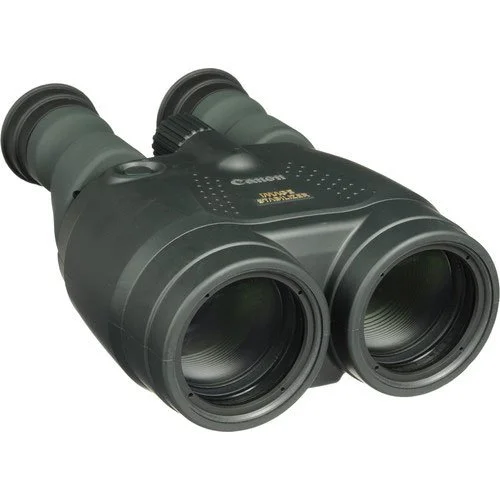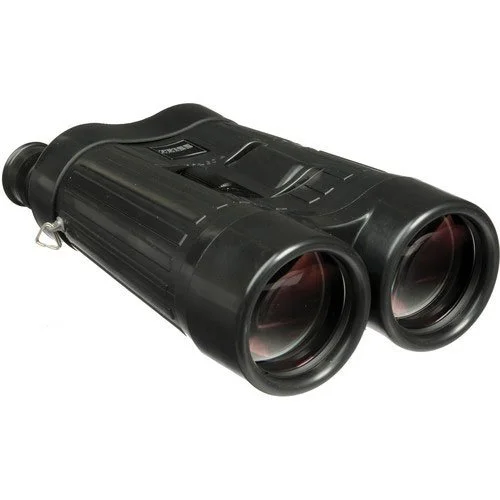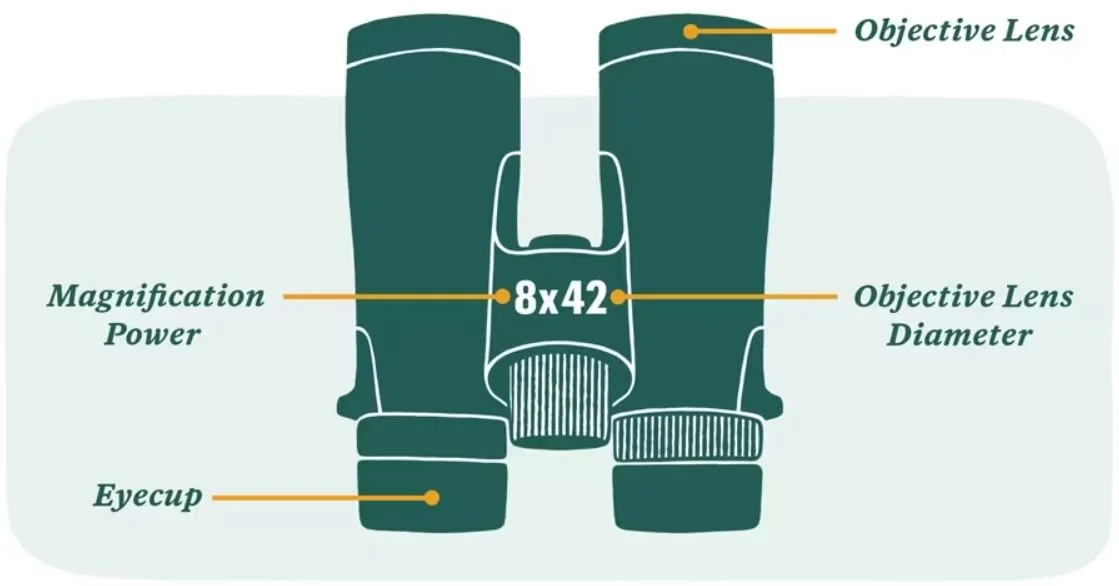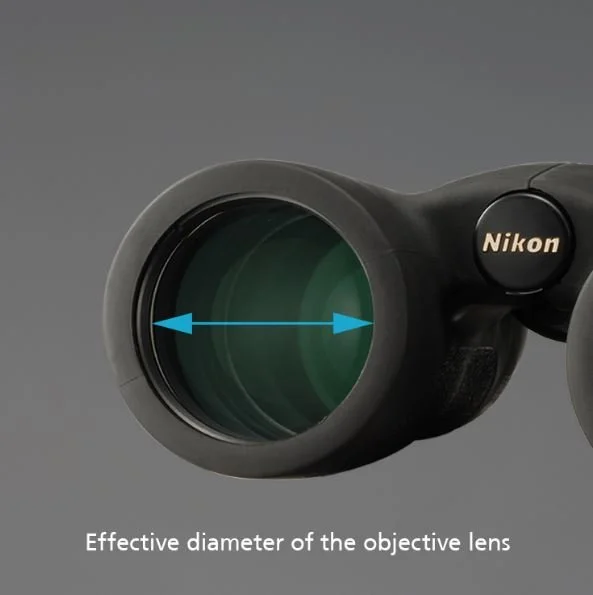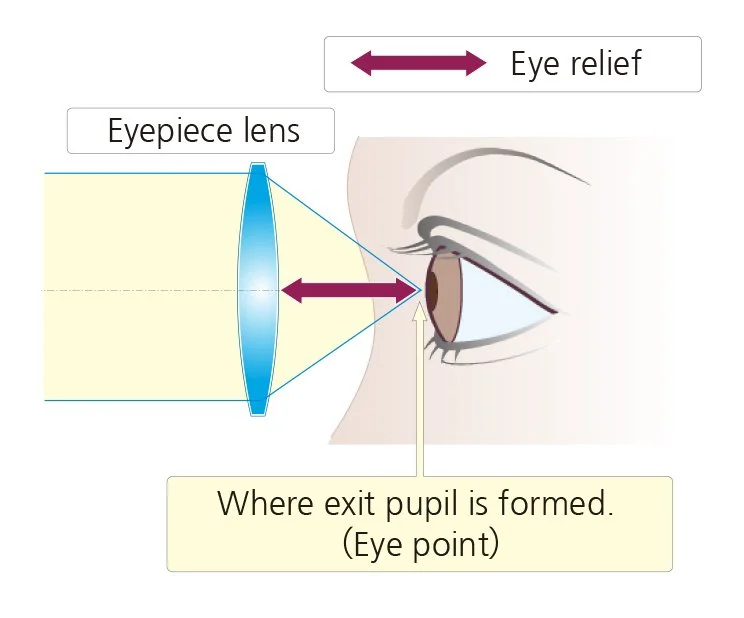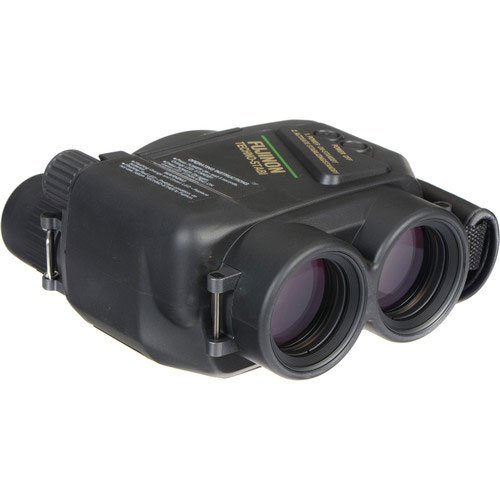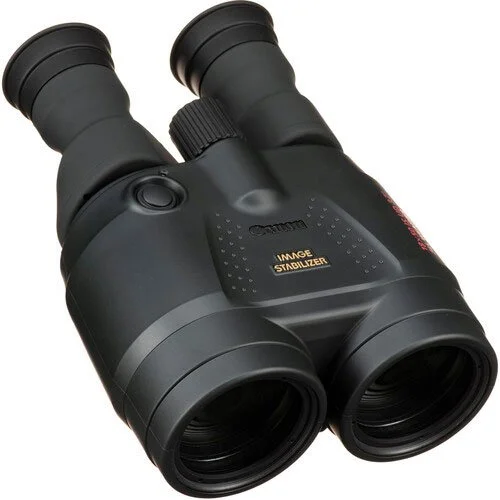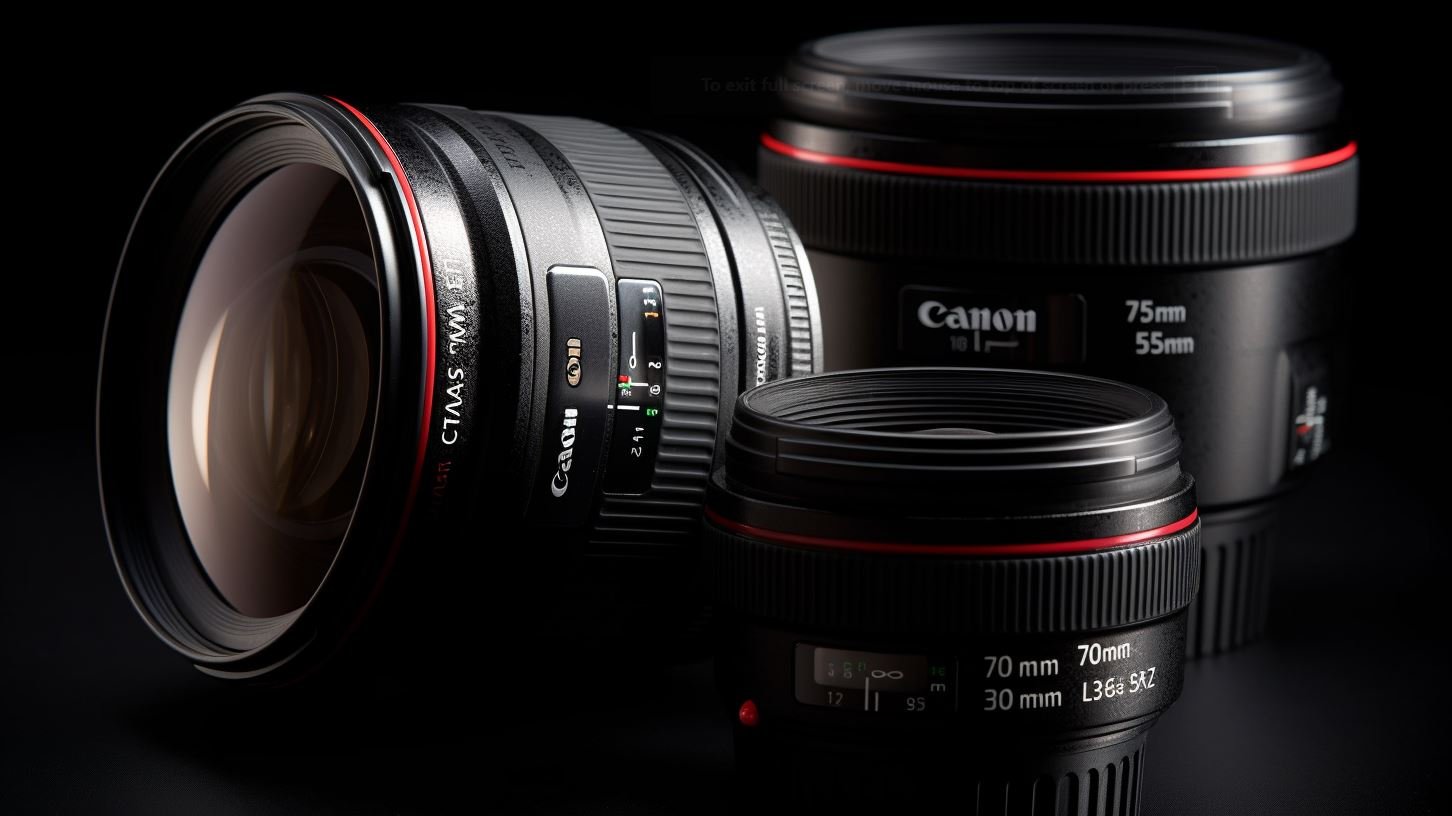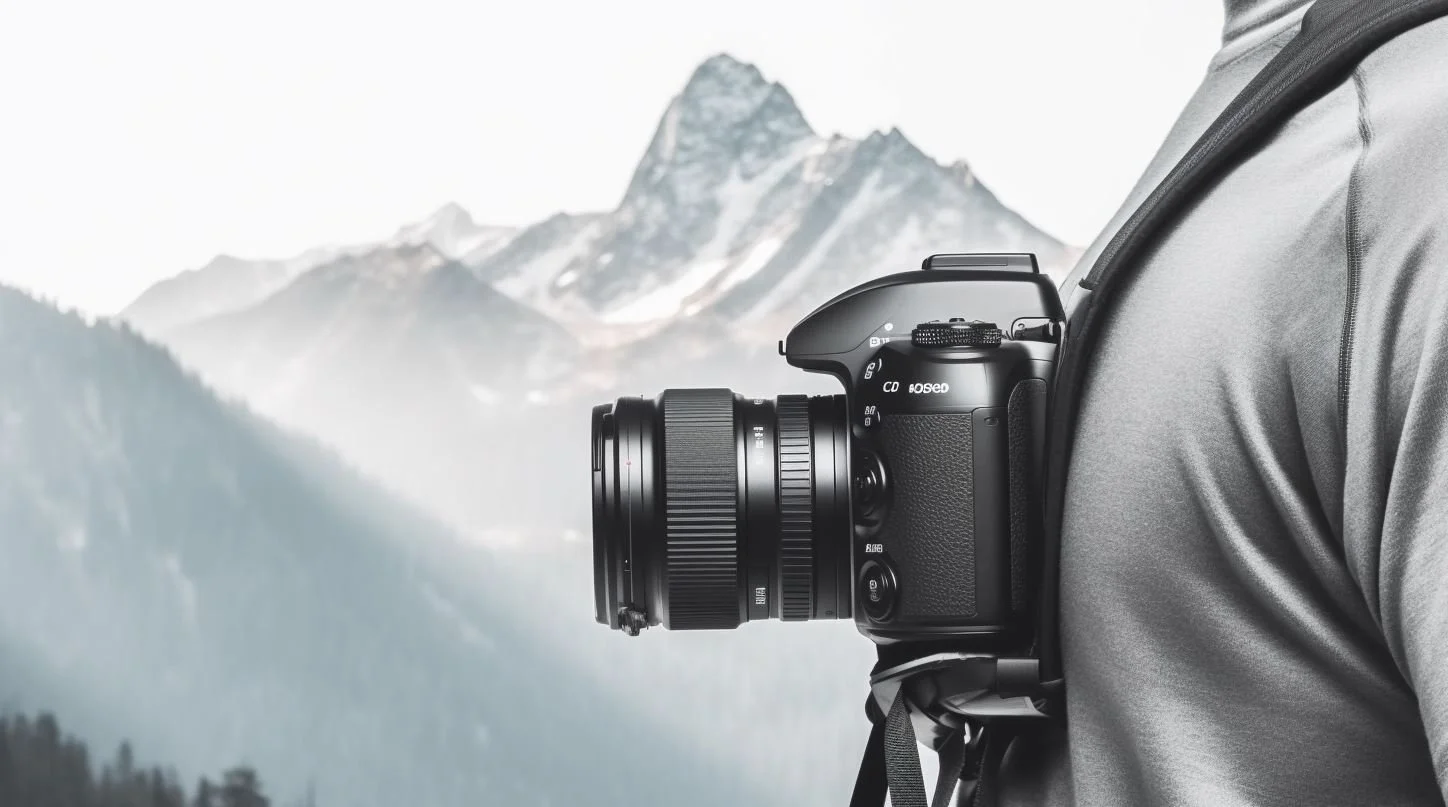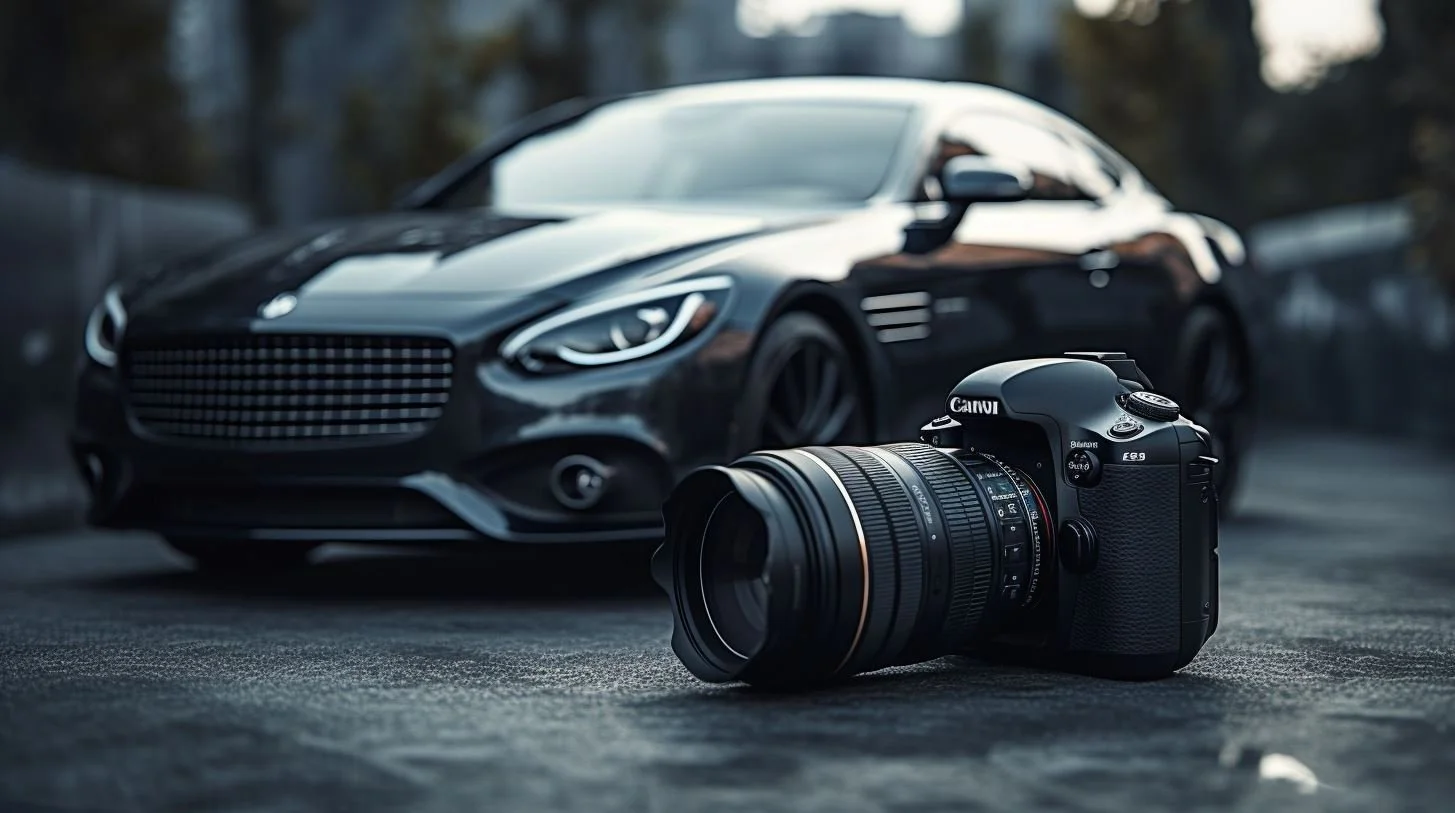Best Binoculars with Image Stabilization
Learn about the types of image stabilization in binoculars, which are best, and what models are available for any budget.
Binoculars are a popular tool for outdoor enthusiasts, birdwatchers, hunters, and sports enthusiasts. Binoculars allow you to see things up close and in detail, which can enhance your outdoor experiences.
However, one problem with binoculars is that they can be difficult to hold steady, especially when you’re looking at something from a distance. This is where image stabilization comes in.
Best Binoculars with Image Stabilization
Most Affordable: Canon 8x20
Affordable 10x: Canon 10x30
Best 10x: Canon 10x42L
Best 12x: Canon 12x36
Best 14x: Fujinon 14x40
Best 15x: Canon 15x50
Best 18x: Canon 18x50
Best 20x: ZEISS 20x60
Most Affordable
The Canon 8x20 stabilized binoculars are the most affordable on the market. They’re ultralight and compact, but their small objective lens (20mm) results in a narrow field of view and poor performance in low light. Learn more
Best Value
The Canon 12x36 stabilized binoculars offer great value for the price. Their wider objective lens expands the field of view for better location and tracking of subjects, as well as allowing for more light to enter the lens, resulting in better low-light performance during dawn and dusk. Learn more
Water Resistant
The Canon 15x50 stabilized binoculars are wrapped in an armored chassis that’s slip and water-resistant. The large 50mm objective lenses yield a bright and wide field of view, essential for bird and nature watching, marine use, or astronomical use. Learn more
Waterproof
The Canon 10x42 L WP IS Binoculars are the only fully waterproof binoculars with image stabilization on the market. Learn more
Best Zoom
The ZEISS 20x60 binoculars offer the highest magnification power on the market. With their powerful 20x zoom and large 60mm objectives, you’ll see further and with more detail than with any other pair. Learn more
Stabilized Binoculars FAQ
-
Image stabilization in binoculars works by using a mechanism that compensates for the natural shaking or movement of your hands, which can cause blurring and distortion in the image you see through the binoculars.
The specific mechanism used to achieve image stabilization can vary by manufacturer and model, but there are a few common techniques.
One common technique is to use gyroscopic sensors and microprocessors to detect the movement of the binoculars and then use motors to adjust the angle of the lenses or prisms in real-time to compensate for the movement.
These adjustments are made very quickly, and the end result is that the image appears stable even if the binoculars are being held unsteadily.
Another technique is to use a system of internal prisms or mirrors that can be moved by the user to counteract the effects of hand shake.
These prisms or mirrors are moved manually or with the help of motors, and their movement compensates for any movement or shaking in the binoculars.
Some models may also use a combination of these techniques or other mechanisms to achieve image stabilization.
-
Image stabilization can potentially reduce sharpness in some cases, but modern image stabilization systems are designed to minimize this effect as much as possible.
One way that image stabilization can reduce sharpness is if the stabilization mechanism causes the optics to shift slightly out of alignment, which can result in a loss of detail or clarity in the image.
However, modern image stabilization systems are designed to minimize this effect by using high-precision motors and sensors that make very small adjustments to the optics to maintain alignment.
Another way that image stabilization can reduce sharpness is if the stabilization mechanism introduces a slight delay or lag in the image.
This can happen if the stabilization system is slow to respond to changes in the movement of the binoculars, or if there is a processing delay in the microprocessor or software that controls the system.
However, again, modern image stabilization systems are designed to minimize this effect as much as possible, and most high-end binoculars with image stabilization will have very fast response times and minimal processing delays.
-
Image stabilization for binoculars was first developed and introduced by Canon in 1997.
Canon's first image-stabilized binoculars, the 8x25 IS and 10x30 IS models, were revolutionary at the time, and quickly gained popularity among birdwatchers, nature enthusiasts, and other users who needed a stable and clear image when viewing distant subjects.
Since then, other manufacturers have developed their own image stabilization technologies for binoculars, and the technology has continued to improve and evolve.
Today, there are many different models and types of image-stabilized binoculars available, ranging from compact models designed for casual use to high-end models used by professionals for tasks like surveillance and military observation.
-
Image stabilization in binoculars can be useful in a wide range of situations where you need to view distant subjects, but where hand shake or movement can make it difficult to get a clear and stable image.
Here are a few situations where you might want to use image stabilization in your binoculars:
Birdwatching and wildlife observation:
If you're trying to observe birds, animals, or other wildlife from a distance, image stabilization can be very useful.
The stabilization technology can help you see more details and get a better look at the subject, even if you're viewing from a moving vehicle or in windy conditions.
Stargazing and astronomy:
When viewing celestial objects like stars or planets through binoculars, any movement or shaking can cause the image to blur or distort.
Image stabilization can help keep the image stable and clear, allowing you to see more details and appreciate the beauty of the night sky.
Boating and marine activities:
If you're using binoculars for marine activities like boating, fishing, or sailing, image stabilization can help you keep a steady view even on a rocking boat.
Sports and events:
When watching sports or other events from a distance, image stabilization can help you get a clearer and more stable view, even if you're in the stands or far away from the action.
What is Image Stabilization
Image stabilization is a technology that helps to reduce or eliminate the blurring caused by shaky hands or other factors. It is a process that involves the use of gyroscopes, motion sensors, and other techniques to stabilize the image that you’re viewing through your binoculars.
The main goal of image stabilization is to improve the clarity and sharpness of the image that you’re seeing through your binoculars. It does this by detecting and compensating for any movement that may be occurring. This can help to reduce the effects of hand shake, wind, or other factors that may cause the image to blur or shake.
Advantages of Image Stabilization in Binoculars
Improved Image Quality
The primary advantage of image stabilization in binoculars is that it improves image quality. When you’re using binoculars, the slightest movement can cause the image to blur or shake, which can make it difficult to see what you’re looking at. Image stabilization helps to eliminate this problem by stabilizing the image, which makes it easier to see and more enjoyable to view.
More Comfortable Viewing
Using binoculars for an extended period can be uncomfortable, especially if you’re holding them steady for a long time. Image stabilization helps to reduce the strain on your eyes and arms, which makes it more comfortable to view objects for extended periods.
Better Low Light Performance
Image stabilization can also help to improve the low light performance of binoculars. When there isn’t enough light, it can be difficult to see objects clearly. Image stabilization helps to stabilize the image, which makes it easier to see objects even in low light conditions.
More Versatility
Image stabilization also makes binoculars more versatile. You can use them in a wider range of conditions and situations, which makes them more useful overall. For example, you can use them while walking, in a moving vehicle, or in windy conditions, without sacrificing image quality.
Disadvantages of Image Stabilization in Binoculars
Higher Cost
The main disadvantage of image stabilization in binoculars is that it comes at a higher cost. Binoculars with image stabilization technology tend to be more expensive than those without. This can be a significant drawback for those on a tight budget.
More Complex Design
Binoculars with image stabilization technology tend to be more complex in design, with additional components such as gyroscopes, motion sensors, and other mechanisms. This complexity can make the binoculars more difficult to use and maintain. It can also make them bulkier and heavier, which can be a disadvantage for those who are looking for a lightweight and portable option.
Dependence on Batteries
Image stabilization in binoculars requires power, usually in the form of batteries. This means that you will need to keep the batteries charged or replace them regularly to maintain the functionality of the image stabilization technology. This can be a disadvantage if you’re in a remote location or forget to bring spare batteries.
Reduced Field of View
Binoculars with image stabilization technology often have a reduced field of view compared to those without. This is because the mechanisms used to stabilize the image can take up space that would otherwise be used for lenses, which can affect the overall performance of the binoculars.
Types of Image Stabilization in Binoculars
Image stabilization is a relatively new technology in binoculars, but it is becoming increasingly popular. There are a few different types of image stabilization that are commonly used in binoculars. These include:
Mechanical Image Stabilization (MIS)
Uses a physical mechanism to stabilize the image. This is different from optical or digital image stabilization, which use gyros, accelerometers, and/or image processing to stabilize the image.
MIS typically involves a spring or other mechanical mechanism that is designed to counteract movement and provide a more stable image. The mechanism may be located in the prism assembly or the objective lenses, depending on the design of the binoculars.
MIS is generally less expensive than other types of image stabilization, as it does not require any electronics or software. It also does not require a power source, making it an attractive option for outdoor activities or when power is not readily available.
However, MIS may have some limitations compared to other types of image stabilization. For example, the range of motion may be limited, which can lead to incomplete stabilization of the image. MIS may also be less effective at high magnifications, where even small amounts of movement can lead to significant image shake.
Despite these limitations, MIS can still be effective at stabilizing the image, especially at low magnifications. MIS may be a good option for those who want a simple and affordable image stabilization solution, or for those who prioritize a lightweight and compact design over the highest level of image stabilization.
Digital Image Stabilization (DIS)
Uses digital processing to reduce image shake. DIS works by analyzing the movement of the image and adjusting the frame to keep the center of the image steady.
To achieve this, DIS typically crops the image slightly and applies digital noise reduction to reduce the impact of the image shake. The cropped image is then stabilized by analyzing the movement of the image and adjusting the frame to keep the center of the image steady. The stabilized image is then displayed on the LCD screen or eyepiece of the binoculars.
DIS is generally less expensive than optical image stabilization (OIS), as it does not require any moving parts or gyroscopes. DIS is also generally more lightweight and compact than OIS, making it a good option for those who prioritize portability.
However, DIS can have some limitations compared to OIS. The cropping required for DIS can result in a slightly degraded image quality, as it reduces the amount of information captured by the binoculars. Additionally, DIS can be less effective at stabilizing the image, especially at high magnifications, where even small amounts of movement can lead to significant image shake.
Despite these limitations, DIS can still be effective at stabilizing the image, especially at low to moderate magnifications. DIS can be a good option for those who want a more affordable image stabilization solution or for those who prioritize a lightweight and compact design over the highest level of image stabilization. DIS is particularly useful for activities such as hiking, camping, and travel, where portability is important.
Optical Image Stabilization (OIS)
Uses a physical mechanism to stabilize the image. OIS works by moving one or more of the lenses inside the binoculars to counteract movement and provide a more stable image.
To achieve this, OIS typically uses a combination of a gyroscope and microcomputer to detect and compensate for vibrations in the binoculars. The gyroscope and microcomputer work together to detect movement and then move the lenses to counteract the movement.
OIS is generally considered to be the most effective type of image stabilization in binoculars, as it can provide a very stable image, even at high magnifications. OIS can also provide stable images in low-light conditions, which is particularly useful for activities such as astronomy or nighttime wildlife observation.
However, OIS is also the most expensive type of image stabilization, as it requires a more complex mechanism than either digital or mechanical stabilization. OIS can also be heavier and bulkier than binoculars without stabilization, making them less portable.
Despite these limitations, OIS can be a good option for those who prioritize the highest level of image stabilization and are willing to invest in a more expensive binocular. OIS is particularly useful for activities such as bird watching, hunting, and marine use, where a stable image is essential for spotting and tracking objects.
Hybrid Image Stabilization
Combines optical and digital stabilization to provide a very stable image. HIS uses a combination of a gyroscope and microcomputer to detect and compensate for vibrations, and image processing to further refine the image stabilization.
The gyroscope and microcomputer work together to detect and compensate for vibrations in the binoculars by moving one or more of the lenses to counteract the movement. The image is then further refined through image processing, which analyzes the movement of the image and adjusts the frame to keep the center of the image steady.
HIS is generally considered to be more effective than either optical or digital stabilization alone, as it combines the benefits of both. HIS can provide a very stable image, even at high magnifications, and can be effective in a wide range of situations, including low-light conditions.
However, HIS is also the most expensive type of image stabilization, as it requires a more complex mechanism than either optical or digital stabilization alone. HIS can also be heavier and bulkier than binoculars without stabilization and can require more power to operate, resulting in shorter battery life.
Despite these limitations, HIS can be a good option for those who prioritize the highest level of image stabilization and are willing to invest in a more expensive binocular. HIS is particularly useful for activities such as bird watching, hunting, and marine use, where a stable image is essential for spotting and tracking objects.
Pros and Cons for Each Image Stabilization Type
Mechanical Image Stabilization:
- Most affordable image stabilization type
- Does not require a power source
- Best for lower magnifications
- May have a limited range of motion, leading to incomplete stabilization
- Less effective at high magnifications
Digital Image Stabilization:
- Generally less expensive than OIS
- Lightweight and compact
- No moving parts
- Slightly degraded image quality due to cropping or digital noise reduction
- May have a slight lag or delay in stabilization
- Requires more power to operate, resulting in shorter battery life
- Less effective at higher magnifications
Optical Image Stabilization:
- Can provide very effective image stabilization, resulting in a clear and stable image
- Does not degrade image quality
- Good low-light performance
- Does not have lag or delay in stabilization
- One of the most expensive types of image stabilization
- Requires more power to operate, resulting in shorter battery life
Hybrid Image Stabilization:
- Combines the benefits of both optical and digital stabilization, resulting in a very stable image
- Effective even at high magnifications
- Does not degrade image quality
- Good low-light performance
- The most expensive type of image stabilization
- Can be heavier and bulkier
- Requires more power to operate, resulting in shorter battery life
Choosing the Right Image Stabilized Binoculars
When choosing image stabilized binoculars, there are several factors to consider. These include:
Objective Lens Size
One of the most important factors to consider when choosing binoculars is the size of the objective lens. The objective lens is the larger lens at the end of the binoculars that collects light and creates an image.
The objective lens size is measured in millimeters, and generally, the larger the objective lens, the brighter the image will be. However, larger objective lenses also mean that the binoculars will be heavier and bulkier, making them more difficult to carry around.
For most binocular uses, the best objective lens size falls between 32mm and 42mm. This range strikes a balance between brightness and portability, making it easy to carry around and use for extended periods without causing eye fatigue.
Magnification Power
Binocular magnification refers to how much larger the object appears when viewed through the binoculars than it does to the naked eye. It is typically represented by a number, such as 8x, 10x, or 12x, which indicates how many times closer the object appears when viewed through the binoculars.
For example, if the magnification is 8x, the object will appear eight times closer than it does to the naked eye.
Click to enlarge.
Higher magnification can be useful for observing details on distant objects, but it can also lead to shakier images, making it harder to track moving birds, while lower magnification may make it more difficult to see small details on distant birds.
Generally speaking, magnification power between 8x and 10x provides a good balance between image stability and field of view, making it easier to locate and track your subject through the lenses.
Stabilization Type
As discussed earlier, there are different types of image stabilization technology available.
Optical image stabilization is the most effective, but also the most expensive.
Digital image stabilization is less effective but more affordable.
Hybrid image stabilization combines both technologies for the best overall performance.
Durability
Since most binoculars are used outdoors, durability is a crucial factor to consider.
Look for binoculars that are weatherproof, shockproof, and waterproof, especially if you plan to use your binoculars in wet and humid environments.
Weight & Portability
As we mentioned earlier, the size and weight of the binoculars are essential considerations for binocular use. Binoculars that are too heavy or bulky can be tiring to carry around, making them less practical.
The ideal weight for portable binoculars should be under 2 pounds (900 grams) to ensure maximum portability and ease of use. Compact binoculars are often more lightweight and easier to carry around, but they may sacrifice image quality in exchange for portability.
Lens Coatings
The type of lens coating used on binoculars can have a significant impact on image quality, brightness, and color accuracy, so it's important to choose a pair of binoculars with high-quality lens coatings that fit your needs and budget.
A high-quality lens coating will ensure that the image is sharp, clear, and bright, even in low light conditions.
The coatings on the lenses also affect how much light is transmitted, how much glare and reflection is reduced, and how much color distortion is eliminated.
There are several different types of lens coatings used on binoculars that can affect image quality, brightness, and color accuracy. Some of the most common binocular lens coatings include:
Coated lenses: These lenses have a single layer of coating on at least one surface of the lens to reduce reflection and glare. Coated lenses are typically found on entry-level binoculars and provide some improvement in image quality over uncoated lenses.
Fully-coated lenses: Fully-coated lenses have multiple layers of coating on all air-to-glass surfaces of the binoculars, which improves light transmission, color accuracy, and contrast. Fully-coated lenses are a step up from coated lenses and are found on mid-range binoculars.
Multi-coated lenses: Multi-coated lenses have multiple layers of coating on some air-to-glass surfaces, typically the outer lenses, which reduces reflection and glare even further than fully-coated lenses. Multi-coated lenses provide better image quality and color accuracy than fully-coated lenses and are typically found on high-end binoculars.
Fully multi-coated lenses: Fully multi-coated lenses have multiple layers of coating on all air-to-glass surfaces, including the interior lenses. Fully multi-coated lenses provide the best image quality, brightness, color accuracy, and contrast, and are typically found on premium binoculars.
In addition to these coatings, there are also special coatings that can be added to the lenses, such as anti-reflective coatings, which reduce reflection and glare even further, and hydrophobic coatings, which repel water and oils from the lenses.
Look for binoculars with multi-coated or fully multi-coated lenses, as they will offer the best image quality.
Prism Type
There are several types of prisms used in binoculars to transmit and invert the image. The most common types are:
Porro Prism: The Porro prism was the first prism design used in binoculars and is still commonly used today. It uses two right-angled prisms to bend the light path and produce an upright image. Porro prism binoculars tend to be bulkier but offer a wider field of view and are often less expensive than other prism types.
Pros: • Offers a wider field of view than other prism types • Provides a stereoscopic image • Typically less expensive than other prism types
Cons: • Bulkier and heavier design compared to other prism types • Not as durable as other prism types, as the prisms are often held together by glue
Roof Prism: Roof prism binoculars use a complex prism system to produce an upright image. They are more compact than Porro prism binoculars and have a straight barrel design. Roof prism binoculars tend to be more expensive than Porro prism binoculars of similar quality.
Pros: • More compact and lightweight design compared to Porro prism binoculars • More durable, as the prisms are often held together by mechanical means rather than glue • Can offer superior image quality compared to Porro prism binoculars of similar quality
Cons: • Generally more expensive than Porro prism binoculars • Narrower field of view than Porro prism binoculars • More complex design can lead to more potential issues with image quality
Schmidt-Pechan Prism: The Schmidt-Pechan prism is also a type of roof prism and is commonly used in compact binoculars. It uses a combination of reflective and refractive surfaces to produce an upright image.
Pros: • Compact design and lightweight • Can offer excellent image quality with a wide field of view • Often used in high-end compact binoculars
Cons: • More expensive than Porro prism binoculars • Can be more difficult to manufacture and repair compared to other prism types
Abbe-Koenig Prism: The Abbe-Koenig prism is a type of roof prism that uses a reflective surface to produce a more compact design. They are commonly used in high-end binoculars and offer superior image quality, but are more expensive.
Pros: • Compact design with excellent image quality • Can offer a wide field of view and high magnification • Superior to other prism types in low-light conditions
Cons: • The most expensive type of prism used in binoculars • More complex design can make it more difficult to manufacture and repair
Each type of prism has its advantages and disadvantages, and the choice between them often comes down to personal preference, budget, and desired features.
Eye Relief
Binocular eye relief refers to the distance between the eyepiece and your eyes when you are using binoculars. It is an essential factor to consider, particularly for individuals who wear glasses or who need more space between their eyes and the binoculars for comfort.
If the eye relief is too short, it may be difficult to see the entire field of view, particularly if you are wearing glasses. Additionally, if the eyepiece is too close to your eyes, it can be uncomfortable and cause eye fatigue, particularly when using binoculars for extended periods.
The ideal eye relief distance depends on personal preferences and whether you wear glasses.
Generally, an eye relief of 14-16mm is considered suitable for individuals who wear glasses.
For those who do not wear glasses, an eye relief of around 10-12mm may be adequate.
Field of View
The field of view refers to the area visible through the binoculars at a certain distance. The wider the field of view, the more area you can see through the binoculars.
A wider field of view is useful when observing subjects at close range, as it allows you to track movement more easily. However, wider fields of view usually have lower magnification power and may not provide as much detail on distant subjects.
For most purposes, a field of view of around 300 to 400 feet at 1,000 yards is ideal. This range offers a good balance between a wide field of view and sufficient magnification to observe details on distant subjects.
Price
The cost of binoculars can vary widely depending on the features, quality, and brand. However, as a general rule, you can expect to pay more for binoculars with higher-quality lenses, coatings, and image stabilization.
A good pair of binoculars can be found for between $200 and $500. While it may be tempting to go for the cheapest option, it's important to remember that higher-quality binoculars will often provide better image quality and last longer, making them a worthwhile investment.
Best Binoculars with Image Stabilization (Recommendations)
Best Binoculars with Image Stabilization Recommendations:
Most Affordable: Canon 8x20
Affordable 10x: Canon 10x30
Best 10x: Canon 10x42L
Best 12x: Canon 12x36
Best 14x: Fujinon 14x40
Best 15x: Canon 15x50
Best 18x: Canon 18x50
Best 20x: ZEISS 20x60
Most Affordable
The Canon 8x20 IS Image Stabilized Binoculars are affordable, compact, and lightweight binoculars ideal for a variety of outdoor activities, including birdwatching, hiking, and travel.
Design and Build Quality: The Canon 8x20 IS Binoculars have a sleek, modern design that is stylish and functional. The binoculars are compact and lightweight, making them easy to carry around in a pocket or backpack. The body is made of durable polycarbonate and is sealed against dust.
Optical Performance: The Canon 8x20 IS Binoculars feature an 8x magnification and a 20mm objective lens. The image stabilization system uses a gyroscopic sensor to detect movement and adjusts the image to compensate for any shaking. This means you can view objects at long distances with minimal blur and distortion.
The binoculars have a field of view of 6.6 degrees, equivalent to 115m/1000m, and a close focus distance of 2.5m. The optics are coated with Super Spectra coating, which helps to reduce glare and improve image clarity.
Ease of Use: The Canon 8x20 IS Binoculars are incredibly easy to use. The image stabilization system is activated by pressing a button on the top of the binoculars. The binoculars also have an easy-to-use center focus knob, allowing for quick and easy focus adjustments. The eyepieces are adjustable so you can customize them to fit your eyesight.
Portability: The Canon 8x20 IS Binoculars are extremely portable. They weigh just 15 ounces, making them easy to carry around in a pocket or backpack. The binoculars also come with a soft carrying case, which helps to protect them when they are not in use.
Battery Life: The Canon 8x20 IS Binoculars are powered by a single CR123A battery, which is included with the binoculars. The battery life is rated at approximately 6 hours of continuous use, which is more than enough for most outdoor activities.
Bottom Line: The Canon 8x20 IS Binoculars are entry-level stabilized optics. They’re extremely lightweight, portable, and have a long battery life but their small objective lenses yield a narrow field of view and poor performance in low-light conditions during dawn and dusk.
| Magnification | Objective Lens | Weight | Battery | Lens Coating | Water Resistant | Prism |
|---|---|---|---|---|---|---|
| 8x | 20mm | 14.8oz / 420g | 6 Hours | Fully Multi-Coated | No | Porro |
Affordable 10x
The Canon 10x30 IS II Image Stabilized Binoculars are a mid-range option for those looking for a pair of binoculars with image stabilization.
Design and Build Quality: The Canon 10x30 IS II Binoculars have a modern, ergonomic design that is both stylish and functional. The body is made of durable polycarbonate and is sealed against dust. The binoculars are also lightweight and compact, making them easy to carry around.
Optical Performance: The Canon 10x30 IS II Binoculars feature a 10x magnification and a 30mm objective lens. The image stabilization system uses a gyroscopic sensor to detect movement and then adjusts the image to compensate for any shaking. This means that you can view objects at long distances with minimal blur and distortion.
The binoculars have a field of view of 6 degrees, which is equivalent to 105m/1000m, and a close focus distance of 4.2m. The optics are coated with Super Spectra coating, which helps to reduce glare and improve image clarity.
Ease of Use: The Canon 10x30 IS II Binoculars are incredibly easy to use. The image stabilization system is activated by pressing a button on the top of the binoculars. The binoculars also have an easy-to-use center focus knob, which allows you to quickly and easily adjust the focus. The eyepieces are adjustable, which means that you can adjust them to fit your eyesight.
Portability: The Canon 10x30 IS II Binoculars are extremely portable. They weigh just 21 ounces, making them easy to carry around in a backpack or with a strap. The binoculars also come with a soft carrying case, which helps to protect them when they are not in use.
Battery Life: The Canon 10x30 IS II Binoculars are powered by two AA batteries, which are included with the binoculars. The battery life is rated at approximately 9 hours of continuous use, which is more than enough for most outdoor activities.
Bottom Line: The Canon 10x30 IS II Binoculars are a solid mid-range option. They’re compact, lightweight, easy to use, have a great battery life, and offer a wider field of view and better low-light performance than the cheaper Canon 8x20 IS (above). However, at 30mm, they’re still pretty narrow and aren’t as bright or as good for dawn/dusk use as other options.
| Magnification | Objective Lens | Weight | Battery | Lens Coating | Water Resistant | Prism |
|---|---|---|---|---|---|---|
| 10x | 30mm | 21oz / 601g | 9 Hours | Fully Multi-Coated | No | Porro |
Best 10x
Besides being the best 10x magnification IS binoculars on the market, the Canon 10x42 L IS WP are one of only two fully waterproof binoculars with image stabilization. This makes them ideal for marine use.
Design and Build Quality: The Canon 10x42 L IS WP Binoculars have a professional-grade design and build. The body is made of durable magnesium alloy and is sealed against dust and water, making it suitable for use in various outdoor conditions. The binoculars are also relatively lightweight and compact, making them easy to carry around.
Optical Performance: The Canon 10x42 L IS WP Binoculars feature a 10x magnification and a 42mm objective lens. The image stabilization system uses a gyroscopic sensor to detect movement and then adjusts the image to compensate for any shaking. This means that you can view objects at long distances with minimal blur and distortion.
The binoculars have a field of view of 6.5 degrees, which is equivalent to 114m/1000m, and a close focus distance of 3.5m. The optics are coated with Super Spectra coating, which helps to reduce glare and improve image clarity.
Ease of Use: The Canon 10x42 L IS WP Binoculars are very easy to use. The image stabilization system is activated by pressing a button on the top of the binoculars. The binoculars also have an easy-to-use center focus knob, which allows you to quickly and easily adjust the focus. The eyepieces are adjustable, which means that you can adjust them to fit your eyesight.
Portability: The Canon 10x42 L IS WP Binoculars are relatively portable. They weigh just 38 ounces, making them easy to carry around in a backpack or with a strap. The binoculars also come with a soft carrying case, which helps to protect them when they are not in use.
Battery Life: The Canon 10x42 L IS WP Binoculars are powered by two AA batteries, which are included with the binoculars. The battery life is rated at approximately 6 hours of continuous use, which is more than enough for most outdoor activities.
Bottom Line: The Canon 10x42 L IS WP Binoculars are a premium pair of stabilized binoculars. Their flagship feature is fully waterproof performance, making them ideal for marine use. With their professional features, they’re still relatively lightweight and portable, with decent battery life to boot. However, these binoculars are quite expensive and may be out of reach for beginners and hobbyists.
| Magnification | Objective Lens | Weight | Battery | Lens Coating | Waterproof | Prism |
|---|---|---|---|---|---|---|
| 10x | 42mm | 38oz / 1077g | 6 Hours | Fully Multi-Coated | Yes | Porro |
Best 12x
The Canon 12x36 IS III Image Stabilized Binoculars are a mid-range option featuring a sleek, modern design and are well-built with high-quality materials.
Design and Build Quality: The Canon 12x36 IS III Binoculars have a modern design that is both stylish and functional. The body is made of durable polycarbonate and is sealed against dust. The binoculars are also relatively lightweight and compact, making them easy to carry around.
Optical Performance: The Canon 12x36 IS III Binoculars feature a 12x magnification and a 36mm objective lens. The image stabilization system uses a gyroscopic sensor to detect movement and then adjusts the image to compensate for any shaking. This means that you can view objects at long distances with minimal blur and distortion.
The binoculars have a field of view of 5 degrees, which is equivalent to 84m/1000m, and a close focus distance of 6m. The optics are coated with Super Spectra coating, which helps to reduce glare and improve image clarity.
Ease of Use: The Canon 12x36 IS III Binoculars are very easy to use. The image stabilization system is activated by pressing a button on the top of the binoculars. The binoculars also have an easy-to-use center focus knob, which allows you to quickly and easily adjust the focus. The eyepieces are adjustable, which means that you can adjust them to fit your eyesight.
Portability: The Canon 12x36 IS III Binoculars are relatively portable. They weigh just 23 ounces, making them easy to carry around in a backpack or with a strap. The binoculars also come with a soft carrying case, which helps to protect them when they are not in use.
Battery Life: The Canon 12x36 IS III Binoculars are powered by two AA batteries, which are included with the binoculars. The battery life is rated at approximately 4 hours of continuous use, which may not be enough for extended use.
Bottom Line: The Canon 12x36 IS III Binoculars offer great value for their price for those looking for a good deal. They’re lightweight, compact, well-built, and offer a good field of view and brightness. However, at 36mm, they’re not as bright or wide as other options on this list and battery life is relatively short.
| Magnification | Objective Lens | Weight | Battery | Lens Coating | Waterproof | Prism |
|---|---|---|---|---|---|---|
| 12x | 36mm | 23oz / 660g | 4 Hours | Fully Multi-Coated | No | Porro |
Best 14x
The Fujinon 14x40 TS1440 Techno-Stabi Image-Stabilized Binoculars are high-end binoculars designed for advanced users who demand excellent image quality and superior stabilization.
Design and Build Quality: The Fujinon 14x40 TS1440 Techno-Stabi Image-Stabilized Binoculars are designed to be rugged and durable. The body is made of a high-strength magnesium alloy, which is both lightweight and strong.
The binoculars are also fully waterproof and fog-proof, making them ideal for use in all weather conditions. The design of the binoculars is also ergonomic and comfortable to use, with a large focus wheel and a rubber coating that provides a secure grip.
Optical Performance: The Fujinon 14x40 TS1440 Techno-Stabi Binoculars feature a 14x magnification and a 40mm objective lens. The image stabilization system uses a gyroscopic sensor to detect movement and then adjusts the image to compensate for any shaking. This means that you can view objects at long distances with minimal blur and distortion.
They also have a field of view of 4.2 degrees, which is equivalent to 73m/1000m, and a close focus distance of 5m. The optics are coated with Fujinon's EBC coating, which helps to reduce glare and improve image clarity.
Ease of Use: The Fujinon 14x40 TS1440 Techno-Stabi Binoculars are very easy to use. The image stabilization system is activated by pressing a button on the top of the binoculars. The binoculars also have an easy-to-use center focus knob, which allows you to quickly and easily adjust the focus. The eyepieces are adjustable, which means that you can adjust them to fit your eyesight.
Portability: The Fujinon 14x40 TS1440 Techno-Stabi Binoculars are relatively portable. They weigh 43 ounces, which makes them one of the heavier options, but still easy to carry around in a backpack or with a strap. The binoculars also come with a soft carrying case, which helps to protect them when they are not in use.
Battery Life: The Fujinon 14x40 TS1440 Techno-Stabi Binoculars are powered by two AA batteries, which are included with the binoculars. The battery life is rated at approximately 12 hours of continuous use, which is longer than most other image-stabilized binoculars.
Bottom Line: The Fujinon 14x40 TS1440 Techno-Stabi Binoculars offer a ton of value for their price. For about $1,000, you get powerful 14x magnification, fully waterproof design, wide 40mm objective lenses, exceptional battery life, and upgraded BAK4 roof prisms. It’s no wonder they’re one of the best-selling stabilized binoculars on the market.
| Magnification | Objective Lens | Weight | Battery | Lens Coating | Waterproof | Prism |
|---|---|---|---|---|---|---|
| 14x | 40mm | 43oz / 1219g | 14 Hours | Fully Multi-Coated | Yes | Roof |
Best 15x
The Canon 15x50 IS All-Weather Image Stabilized Binoculars are a high-end option for those looking for a pair of binoculars with image stabilization. The binoculars feature a durable design and are built to withstand a wide range of outdoor conditions.
Design and Build Quality: The Canon 15x50 IS All-Weather Binoculars have a durable design that is built to withstand a wide range of outdoor conditions. The body is made of durable polycarbonate and is sealed against dust and water, making it suitable for use in various outdoor conditions. The binoculars are also relatively lightweight and compact, making them easy to carry around.
Optical Performance: The Canon 15x50 IS All-Weather Binoculars feature a 15x magnification and a 50mm objective lens. The image stabilization system uses a gyroscopic sensor to detect movement and then adjusts the image to compensate for any shaking. This means that you can view objects at long distances with minimal blur and distortion.
They have a field of view of 4.5 degrees, which is equivalent to 79m/1000m, and a close focus distance of 6m. The optics are coated with Super Spectra coating, which helps to reduce glare and improve image clarity.
Ease of Use: The Canon 15x50 IS All-Weather Binoculars are very easy to use. The image stabilization system is activated by pressing a button on the top of the binoculars. The binoculars also have an easy-to-use center focus knob, which allows you to quickly and easily adjust the focus. The eyepieces are adjustable, which means that you can adjust them to fit your eyesight.
Portability: The Canon 15x50 IS All-Weather Binoculars are relatively portable. They weigh 42 ounces, which is on the heavier size, but still easy to carry around in a backpack or with a strap. The binoculars come with a soft carrying case, which helps to protect them when they are not in use.
Battery Life: The Canon 15x50 IS All-Weather Binoculars are powered by two AA batteries, which are included with the binoculars. The battery life is rated at approximately 2.5 hours of continuous use, which is shorter than most other image-stabilized binoculars.
Bottom Line: The Canon 15x50 IS All-Weather Binoculars are the best 15x magnification optics on the market with image stabilization. They’re robustly built, water resistant, and feature very large objective lenses for enhanced image brightness and low-light performance. If their battery life was longer, they’d be nearly perfect.
| Magnification | Objective Lens | Weight | Battery | Lens Coating | Water Resistant | Prism |
|---|---|---|---|---|---|---|
| 15x | 50mm | 42oz / 1179g | 2.5 Hours | Fully Multi-Coated | Yes | Porro |
Best 18x
The Canon 18x50 IS Image Stabilized Binoculars are a high-end option featuring a durable design and are built to withstand a wide range of outdoor conditions.
Design and Build Quality: The Canon 18x50 IS Binoculars have a durable design that is built to withstand a wide range of outdoor conditions. The body is made of durable polycarbonate and is sealed against dust and water, making it suitable for use in various outdoor conditions. The binoculars are also relatively lightweight and compact, making them easy to carry around.
Optical Performance: The Canon 18x50 IS Binoculars feature an 18x magnification and a 50mm objective lens. The image stabilization system uses a gyroscopic sensor to detect movement and then adjusts the image to compensate for any shaking. This means that you can view objects at long distances with minimal blur and distortion.
The binoculars also have a field of view of 3.7 degrees, which is equivalent to 65m/1000m, and a close focus distance of 6m. The optics are coated with Super Spectra coating, which helps to reduce glare and improve image clarity.
Ease of Use: The Canon 18x50 IS Binoculars are very easy to use. The image stabilization system is activated by pressing a button on the top of the binoculars. The binoculars also have an easy-to-use center focus knob, which allows you to quickly and easily adjust the focus. The eyepieces are adjustable, which means that you can adjust them to fit your eyesight.
Portability: The Canon 18x50 IS Binoculars are relatively portable. They weigh just 2.6 pounds, making them easy to carry around in a backpack or with a strap. The binoculars also come with a soft carrying case, which helps to protect them when they are not in use.
Battery Life: The Canon 18x50 IS Binoculars are powered by two AA batteries, which are included with the binoculars. The battery life is rated at approximately 2.5 hours of continuous use, which is shorter than some other image-stabilized binoculars.
Bottom Line: The Canon 18x50 IS Binoculars are a professional-level pair of image-stabilized binoculars. They’re robustly built, water resistant, and feature very large objective lenses for enhanced image brightness and low-light performance. If their battery life was longer, they’d be nearly perfect.
| Magnification | Objective Lens | Weight | Battery | Lens Coating | Water Resistant | Prism |
|---|---|---|---|---|---|---|
| 18x | 50mm | 42oz / 1180g | 2.5 Hours | Fully Multi-Coated | Yes | Porro |
Best 20x
The ZEISS 20x60 Classic S Image Stabilization Binoculars offer the highest magnification power available in a stabilized binocular. Their mechanical design requires no batteries for unlimited use times in the field.
Design and Build Quality: The ZEISS 20x60 Classic S Binoculars have a premium design that is both stylish and functional. The body is made of durable magnesium alloy and is sealed against dust and water, making it suitable for use in various outdoor conditions. The binoculars are also relatively lightweight and compact, making them easy to carry around.
Optical Performance: The ZEISS 20x60 Classic S Binoculars feature a 20x magnification and a 60mm objective lens. The image stabilization system uses a gyroscopic sensor to detect movement and then adjusts the image to compensate for any shaking. This means that you can view objects at long distances with minimal blur and distortion.
The binoculars also have a field of view of 3.4 degrees, which is equivalent to 59m/1000m, and a close focus distance of 30m. The optics are coated with ZEISS' T* coating, which helps to reduce glare and improve image clarity.
Ease of Use: The ZEISS 20x60 Classic S Binoculars are relatively easy to use. The image stabilization system is activated by pressing a button on the top of the binoculars. The binoculars also have an easy-to-use center focus knob, which allows you to quickly and easily adjust the focus. The eyepieces are adjustable, which means that you can adjust them to fit your eyesight.
Portability: The ZEISS 20x60 Classic S Binoculars are relatively portable. They weigh just under 3 pounds, making them easy to carry around in a backpack or with a strap. The binoculars also come with a hard carrying case, which helps to protect them when they are not in use.
Battery Life: The ZEISS 20x60 Classic S Binoculars do not require batteries.
Bottom Line: The ZEISS 20x60 Classic S Binoculars are the best money can buy for those needing extreme magnification and image stabilization. Their mechanical stabilization design yields unlimited use without having to worry about batteries, the mechanism adds significant weight to the binoculars, and are the heaviest pair on this list. However, they are one of the best binoculars ever produced…if you can afford them.
| Magnification | Objective Lens | Weight | Battery | Lens Coating | Water Resistant | Prism |
|---|---|---|---|---|---|---|
| 20x | 60mm | 59oz / 1672g | ∞ | Fully Multi-Coated | Yes | Porro |
Summary
Image stabilization technology has greatly improved the performance of binoculars, making them more versatile and enjoyable to use. With improved image quality, more comfortable viewing, better low-light performance, and increased versatility, image stabilized binoculars are a great investment for anyone who enjoys spending time outdoors.
While there are some drawbacks, such as the higher cost and more complex design, the benefits of image stabilization technology in binoculars far outweigh the disadvantages. When choosing image stabilized binoculars, consider factors such as magnification and objective lens size, image stabilization technology, budget, and size and weight to find the right option for your needs.
Support Acoustic Nature
If you enjoyed this post and would like to help support Acoustic Nature, please consider "buying me a coffee" or becoming a Patreon with the buttons below.
As a thank you for your support, Patreon supporters receive a copy of Field Recording For Beginners, exclusive access to the full Behind The Sounds video series, nature sound library downloads, and more.
If you are unable to support the site financially, please share this post with others, or leave a comment below letting me know you enjoyed this post! Both are free and help the website grow. Thank you ♫
Thanks for reading,
-Jared


